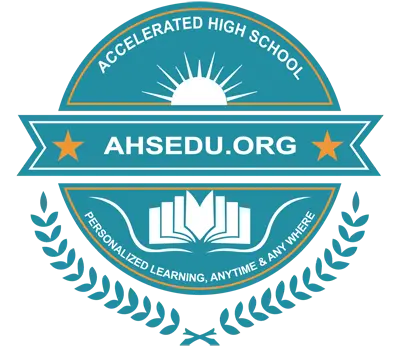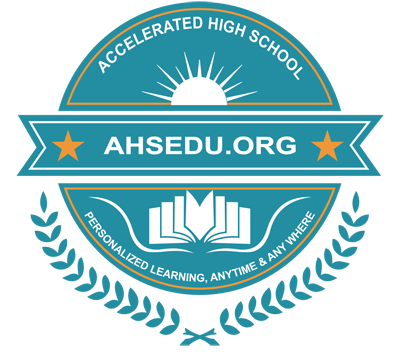Accelerated High School
Standardized Curriculum of Social Studies-IV
In our world today, many amazing things are happening because of science and technology. It's important for everyone to learn about them, even kids in Grade 4. When we understand how things work and how to solve problems using evidence, we can think better about the world around us. Then we can help make decisions about important things like how to take care of the Earth, how to stay healthy, and how to fix problems in our communities.
Mission:
All students will acquire the knowledge and skills to think analytically about how past and present interactions of people, cultures, and the environment shape the American heritage. Such knowledge and skills enable students to make informed decisions that reflect fundamental rights and core democratic values as productive citizens in local, national, and global communities.
Vision:
This course is designed to spark curiosity and foster a deeper understanding of the world we live in. Through engaging lessons and activities, students will;
- Explore fundamental concepts such as family dynamics, the roles of community helpers.
- Discuss the significance of various geographical features.
- Understanding the importance of civic rules and laws to mastering the basics of mapping, including cardinal directions.
- Gain valuable knowledge about their surroundings.
- Discover the rich diversity of our planet, from the towering mountains to the vast oceans, with a special emphasis on the majestic Pacific Ocean.
- Learn about the production of goods, the provision of services, and the concepts of needs, wants, buying, trading, and saving.
Spirit and Intent:
The Grade 1 social studies curriculum at AHS is designed in alignment with The New Jersey Student Learning Standards for Social Studies (NJSLS-SS), providing a comprehensive framework for student learning. Our curriculum emphasizes the exploration of fundamental concepts such as community, family, and citizenship, while also fostering critical thinking and inquiry skills.
At its core, the NJSLS-SS emphasizes three essential dimensions: inquiry, concepts, and content. Throughout the curriculum, students are actively engaged in asking questions, conducting investigations, and making connections between key social studies concepts. This inquiry-based approach encourages students to develop a deeper understanding of the world around them and to become active participants in their communities.
Three Dimensions of AHS Science Curriculum:
The performance expectations in social studies reflect the three dimensions and describe what students should know and be able to do. In layman’s terms, they are “the standards.” They are written as statements that can be used to guide assessment and allow for flexibility in the way that students can demonstrate proficiency. The example below is provided to illustrate the interconnected nature of the NJSLS-SS components.
Social Studies Core Idea
|
|
Historical Thinking and Analysis Practice
|
Analyzing Historical Events and their Impact |
Use historical evidence to evaluate the impact of significant events and individuals on society and governance. |
Crosscutting Concept
|
Cause and Effect |
Analyze the causes and effects of historical events and their impact on societies.
|
For students to develop proficiency in the NJSLS-SS (New Jersey Student Learning Standards for Social Studies), they will need to engage in learning experiences that are meaningful, cumulative, and progressive. Becoming familiar with social studies practices and cross-cutting concepts is a critically important first step in designing learning experiences reflective of the three dimensions. A description of each of the social studies practices and the cross-cutting concepts can be found in the next sections. Students will engage in activities that connect with real-world contexts and promote a deeper understanding of social, historical, economic, and geographical concepts. By connecting new learning with prior knowledge, students develop a more coherent and integrated understanding of social studies content and skills. Through progressive learning, students develop the ability to critically analyze and evaluate information, form well-supported arguments, and propose solutions to complex social issues.
Curriculum for Grade-IV Social Studies:
Standard 1: History, Culture, and Perspectives.
Learning Objectives:
- Explain how an individual’s beliefs, values, and traditions may reflect more than one culture
- Evaluate the impact of different interpretations of experiences and events by people with different cultural or individual perspectives.
- Describe why it is important to understand the perspectives of other cultures in an interconnected world.
- Evaluate the impact of different interpretations of experiences and events by people with different cultural or individual perspectives.
- Describe why it is important to understand the perspectives of other cultures in an interconnected world.
- Explain how an individual’s beliefs, values, and traditions may reflect more than one culture.
Topics of AHS-SS:
Culture
- Give a simple meaning of culture
- Identify the elements of culture
- Explain why people's languages, dressing, and eating habits differ from community to community
Culture Celebrations
- Rosh Hashanah
- Kwanzaa
- Christmas
- Easter
- Lunar New Year
- Ramadan
Standard 2: Geography, People, and the Environment.
Learning Objectives:
- Explain how all people, not just official leaders, play important roles in a community.
- Describe how communities work to accomplish common tasks, establish responsibilities, and fulfill roles of authority.
- Identify the maps or types of maps most appropriate for specific purposes, (e.g., to locate physical and/or human features in a community, to determine the shortest route from one town to another town, to compare the number of people living at two or more locations).
- Use maps to explain the impact of location and place on the relationships between places in New Jersey, the United States, and other countries.
Topics of AHS-SS:
Community and Geography
- What is community?
- Communities and their people
Capital of United States
- Identify state capitals of the West
- Name state capitals of the West
- Identify state capitals of the Midwest
- Name state capitals of the Midwest
- Identify state capitals of the Southeast
- Name state capitals of the Southeast
- Identify state capitals of the Northeast
- Name state capitals of the Northeast
- Identify the 50 state capitals
- Name the 50 state capitals
Standard 3: Economics, Innovation, and Technology.
Learning Objectives:
- Describe how supply and demand influence the price and output of products.
- Explain how scarcity and choice influence decisions made by individuals, communities, and nations.
Topics of AHS-SS:
Supply and Demand
- Understand overall supply and demand
- Understand the quantity supplied and quantity demanded
- Create and use supply and demand curves
- Identify shortage and surplus







